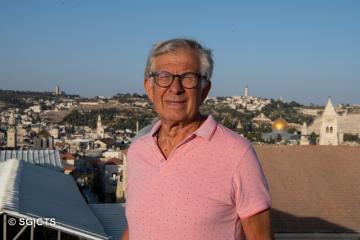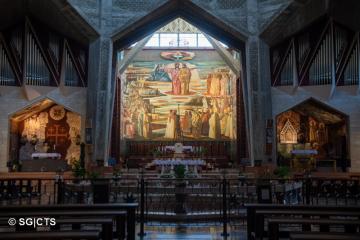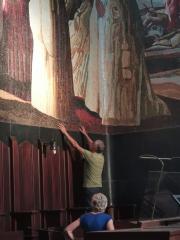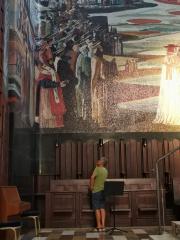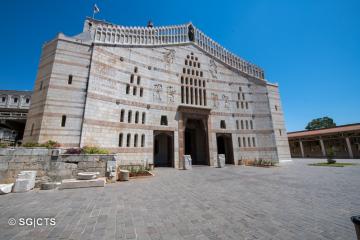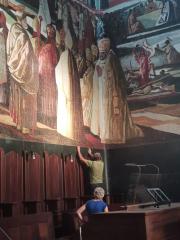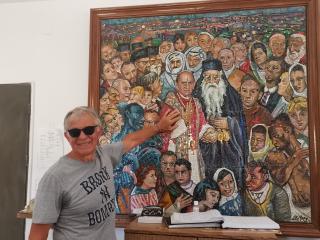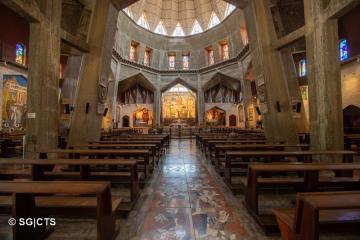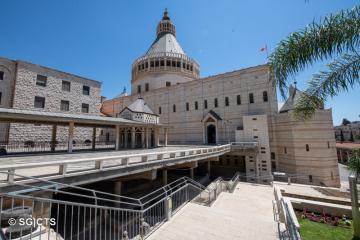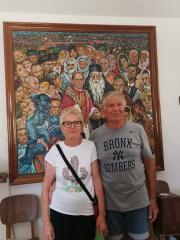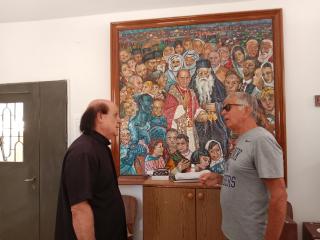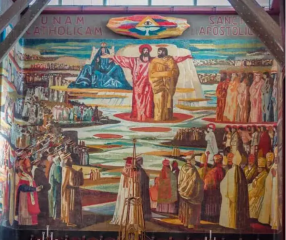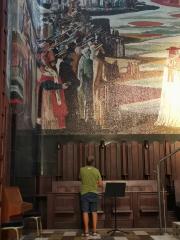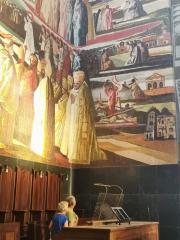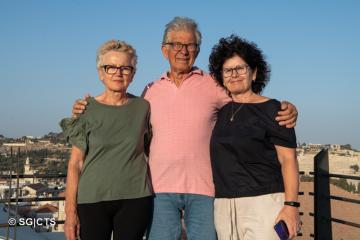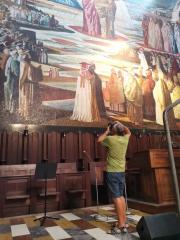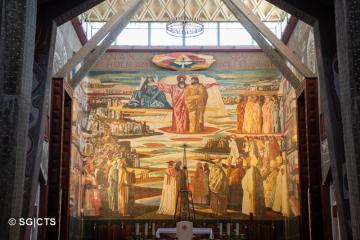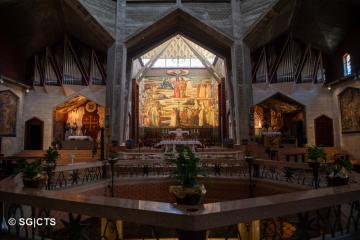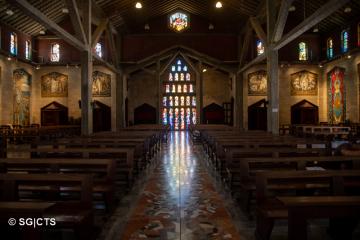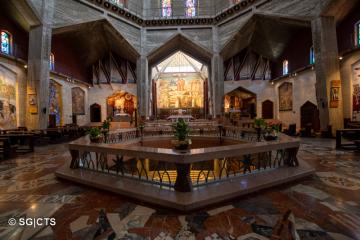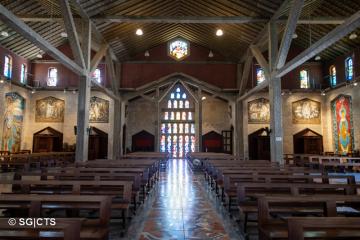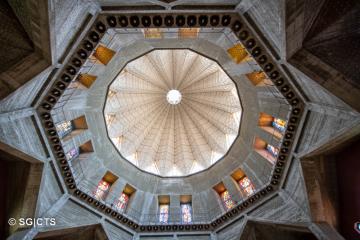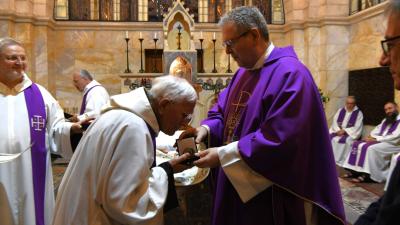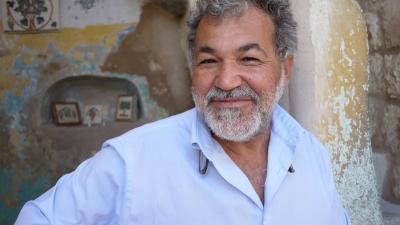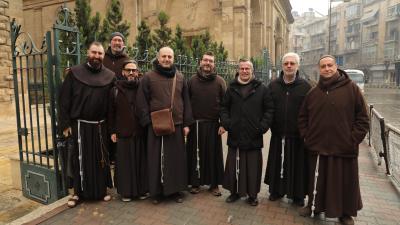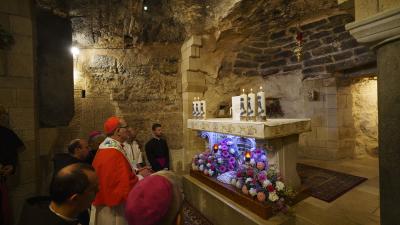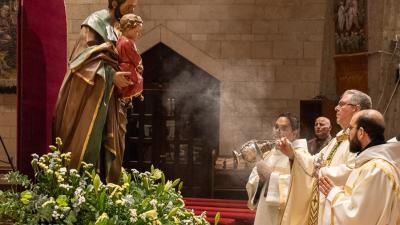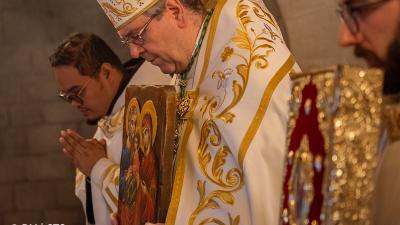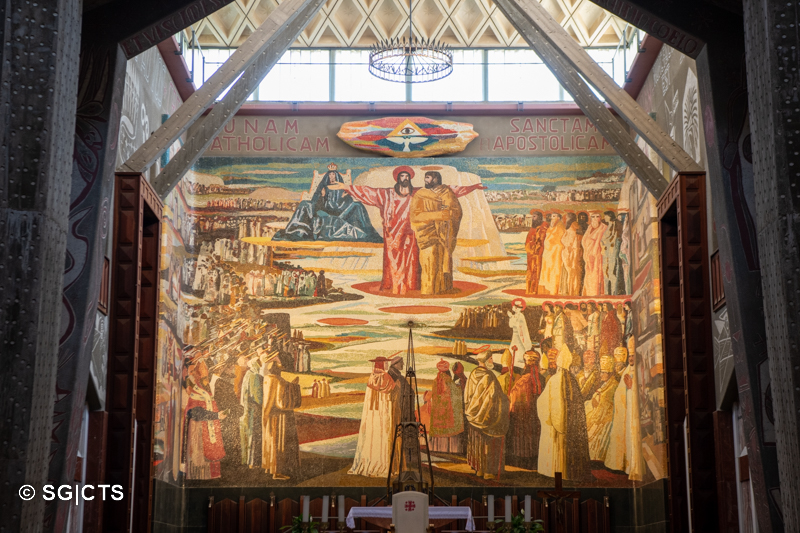
Grandiose and solemn, the large mosaic portraying the “one, holy, Catholic and apostolic Church” which covers the whole apse of the Upper Basilica of the Annunciation in Nazareth cannot fail to be noticed; the Maestro Renato Zoratto, who composed that mosaic, piece after piece, in a work of great skill which can be admired by all, has returned here after 50 years.
Renato Zoratto comes from Codroipo (Udine) and after having attended the artistic school of mosaicists in Spilimbergo, in the 1960s, graduated as a master mosaicist from the same school, immediately starting to work in the mosaic workshops of the D’Agnolo Umberto firm in Milan.
“At only 19, I was lucky enough to meet Professor Salvatore Fiume,” Maestro Zoratto recalls, “who at the time was a set designer at La Scala in Milan: he had just been commissioned to design the large mosaic for the apse of the new Basilica of the Annunciation in Nazareth, and this is where this marvellous adventure began.”
The enormous mosaic of 140 metres showing “the one, holy, Catholic and apostolic Church” was completed in two years, and the new basilica, a modern construction built to the design by the Italian architect Giovanni Muzio, was dedicated on 25 March 1969.
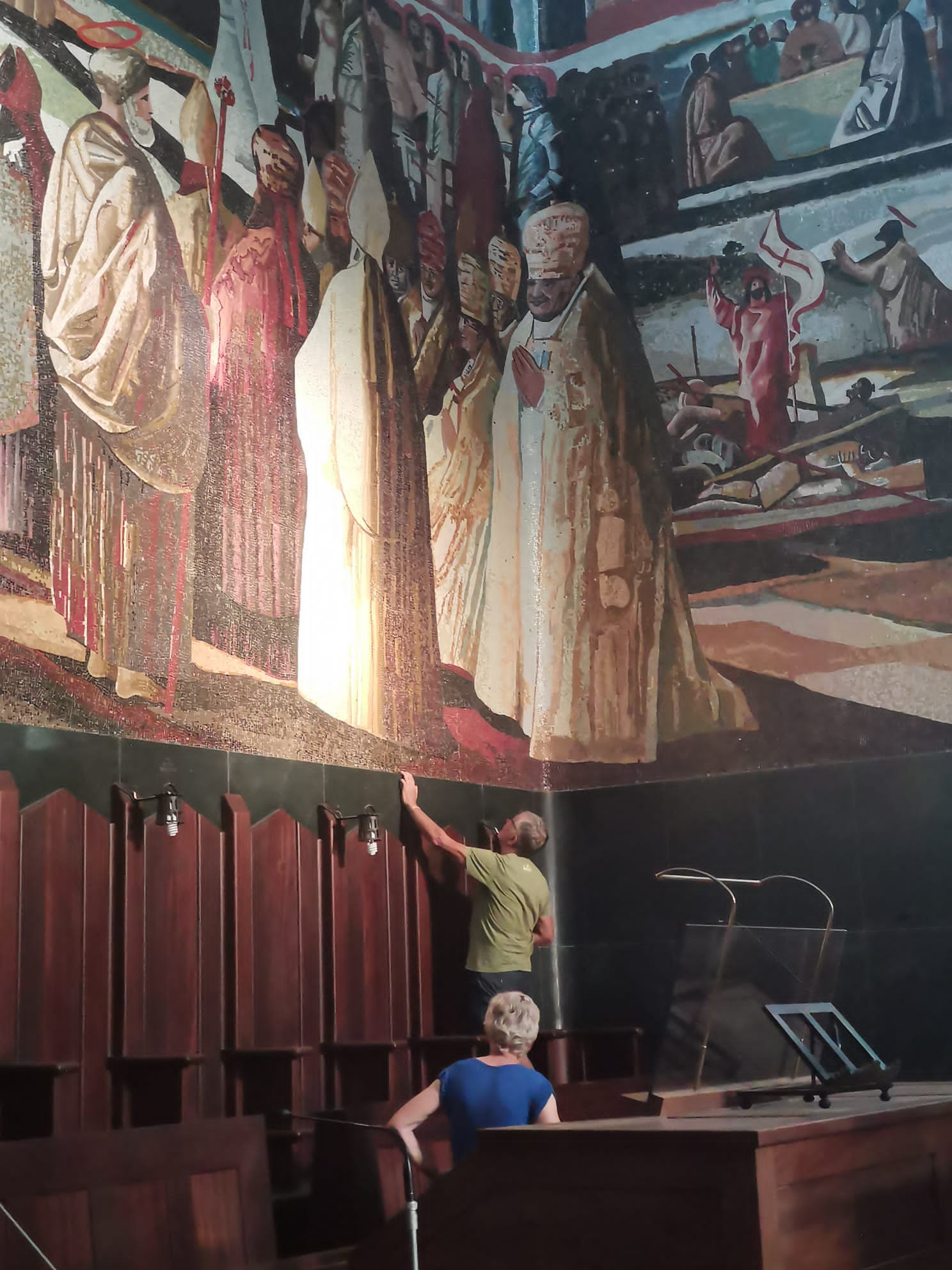
“It was a work which required great commitment and courage between planning, composing and applying. From the small sketch by the artist Fiume, only 80 x 100 cm, we had to put the whole drawing to scale on paper measuring about 140 square metres. Then we started to position the pieces, with the mosaic technique known as 'reverse laying' (the tesserae of the mosaic are stuck on the wrong side on paper. When the design is finished, the canvas is turned over and the work is stuck on to the final support)”
Salvatore Fiume was very scrupulous about the choice of the tesserae and the colours of the enamels: he had precious materials melted down in Venice exclusively to create new original nuances of ochre and reds. The enormous composition was laid out in the storerooms of La Scala in Milan, the only space that could hold a work of this size.
“Franco Zeffirelli also came to see it and complimented us on this masterpiece. Then we divided up, wrapped up and sent the enormous mosaic and we came to Nazareth: in 45 days we applied it to the wall, as it had already all been mapped out.”
Renato Zoratto has returned to see it 56 years later, taking advantage of a pilgrimage in the Holy Land: “When I entered the Basilica, I thought: it is immense, majestic and powerful. I could not move for 10 minutes, almost as though I could not look at it. One night, in a moment of great emotion, I sat down on a step and I cried. Then I went up and touched it: it was as though I remembered each of those tesserae chosen and positioned so scrupulously.”
The mosaic is an art that I have always experienced with total passion,in a very deep way. This links me to all my works, such as the Madonna of Guadeloupe which is also here in Nazareth and the panel of the meeting between St Paul VI and Athenagoras by Aldo Carpi which today can be admired in the Dominus Flevit. Fr. Carlos Molina, director of the Casa Nova in Nazareth and the Franciscans at the Sanctuary all congratulated me and were pleased to meet me. This makes me immensely happy. Coming back here to Nazareth has been a grace and I know that a part of my heart will always stay linked to this Basilica.”
Silvia Giuliano


